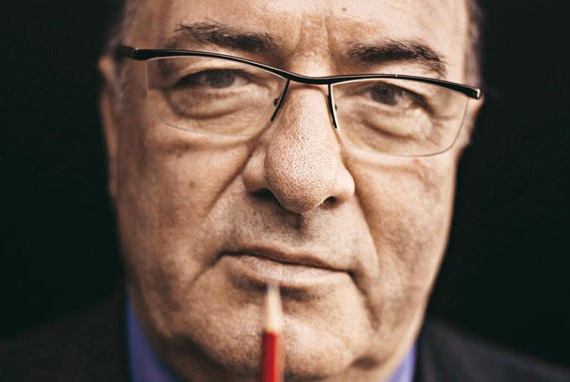Dante Ferretti • Production designer
He may have three Oscars, "but mistakes make things more real"
- After spending eight months in Taiwan on the set of Silence by Martin Scorsese, the great production designer Dante Ferretti has just received the Italian Golden Globe for Life Achievement

11 nominations, three Oscars. The CV of 72-year-old Dante Ferretti, who is considered to be one of the greatest production designers alive, includes films by Pasolini, Fellini, Neil Jordan, Anthony Minghella, Brian De Palma, Tim Burton and Kenneth Branagh (Cinderella [+see also:
trailer
making of
film profile], 2015). After spending eight months in Taiwan on the set of Silence by Martin Scorsese, Ferretti is back in Italy and has just added the Italian Golden Globe for Life Achievement from the foreign press to his collection of awards. Silence marks his ninth time working with Scorsese, and is a project that has been in the making for 9 years, for which he recreated part of Nagasaki, the port of Macau, three villages and a church. "It was a huge undertaking, for a change”. Now Steven Spielberg has asked him if he would be interested in the screenplay for a film he’s directing: “We were at dinner for Scorsese’s birthday”. Meanwhile he’s at Cinecittà working on Set 14 – Fellini’s set, recreating a French hamlet for the TV series on Diabolik. Architect Renzo Piano has also asked him to work on part of the new Academy in Los Angeles, where Ferretti lives.
Cineuropa: Are you happy with this latest award?
Dante Ferretti: I’m always happy to receive life achievement awards, hoping they’re not the last! I’m like Benjamin Button, I’m getting younger as time goes by.
What do you think of the new generation of Italian directors?
I really like them: Matteo Garrone, Paolo Sorrentino, Francesco Munzi, they’re all talented. I don’t work much in Italy because I like designing and building sets, and in Italy a lot of filming is done on location, often making the sets too similar to one another. There’s also a new generation of set designers, most of whom are my former assistants and are very talented. There’s Dimitri Capuani, for example, who was the set designer for Tale of Tales [+see also:
film review
trailer
Q&A: Matteo Garrone
film profile] by Garrone.
Over your career you’ve designed sets for Pier Paolo Pasolini, brought Terry Gilliam’s visions to life, and worked with Martin Scorsese on a number of occasions. How do you go about creating these worlds and giving form to the visions of such different directors?
I start by observing and living in the time in which the film is set. I don’t just read the screenplay and look around. No, I have to experience it! I came to Rome when I was 22/23 years old, and back then I didn’t just see the city at my level… I started seeing things from above, and started looking at the architecture more closely, at the buildings and the roofs… the layers built up over the ages, as fashions have come and gone. This is why I love ‘mistakes’, because they make things real, stop things from being overly reconstructed and perfect. I’m a ‘maximalist megalomaniac’, but I also love making mistakes because they make things real.
What great architects or designers have inspired you over the years?
For Salò, by Pasolini, my inspiration came from Fernand Legèr. I walked into a shop in Rome and bought some wallpaper from the Fascist period. Then we rented a farmstead near Mantua and transformed it with the wallpaper and that interpretation of the style of the time. PPP liked it a lot.
What are the differences for a production designer between working on the set of a European film and that of an American film? Do the differences lie solely in the size of the production or are there different approaches too?
There is definitely a difference in production methods, sometimes excellent films can be made even on a low budget, it depends a lot on the story, the director. When I’m working with a director I admire it’s enough for them to give me a screenplay of blank pages.
How is the art of set design changing in the digital age, in which more and more sets are brought to life on computers?
These days a huge number of films are made using blue screens, but even if the sets are still designed, I’m not that interested. I’m not a big fan of making films like that. It doesn’t reflect me, I’m not young enough for it.
(Translated from Italian)
Did you enjoy reading this article? Please subscribe to our newsletter to receive more stories like this directly in your inbox.
















